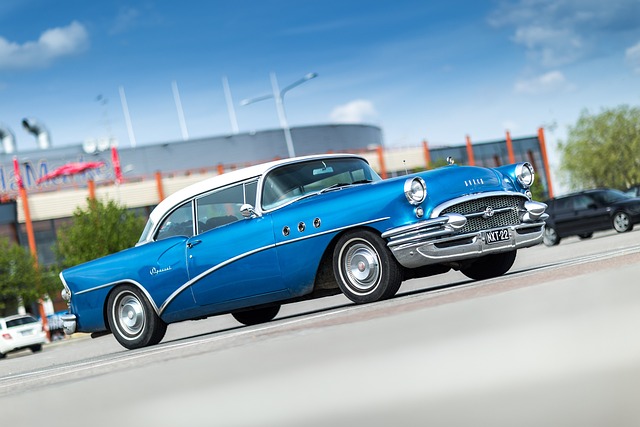Registering a car in California involves understanding specific requirements and gathering essential documents. This comprehensive guide walks you through the process, from verifying your vehicle’s crucial VIN (vehicle identification number) to choosing a license plate design that suits your style. We’ll also navigate the submission of your application and payment of fees to the DMV. By following these steps, ensure a smooth car registration experience in California.
- Understand California Car Registration Requirements
- Gather Necessary Documents for Registration
- Verify Vehicle's VIN (Vehicle Identification Number)
- Choose a License Plate Type and Design
- Submit Application and Pay Fees to DMV
Understand California Car Registration Requirements

Before registering your car in California, it’s crucial to understand the state’s requirements. All vehicles operated on California roads must be properly registered and have a valid, unexpired registration. One key component is ensuring your vehicle’s Vehicle Identification Number (VIN) is accurate and verifiable. Use a trusted mobile VIN verifier or conduct a thorough manual inspection to confirm the VIN details match those listed in official records. This step is essential for identifying your car and verifying its history, which is a critical part of the registration process.
Additionally, you’ll need to meet specific criteria such as having adequate insurance, passing an emissions test if applicable, and paying the associated fees. California’s Department of Motor Vehicles (DMV) provides detailed guidelines on their website, outlining every step involved in the car registration process. Utilizing a mobile VIN inspection tool can streamline this initial verification phase, saving you time and potential headaches later.
Gather Necessary Documents for Registration

Before you start the registration process, it’s crucial to gather all the essential documents required by California’s Department of Motor Vehicles (DMV). This includes your vehicle’s Registration Application (Form DVF-1), a valid driver’s license or ID card, proof of insurance, and perhaps most importantly, your Vehicle Identification Number (VIN) verifier. Utilize a reliable mobile vin inspection service to quickly and accurately obtain this crucial information from your car’s VIN plate.
Additionally, you’ll need to provide proof of ownership, typically in the form of a signed title or a bill of sale if you’ve recently purchased the vehicle. If you’re transferring registration, other documentation like a completed Assignment of Ownership (Form DNV-147) and any applicable fees might be necessary. Make sure everything is in order before heading to your local DMV to streamline the registration process.
Verify Vehicle's VIN (Vehicle Identification Number)

Before you begin the registration process, it’s crucial to verify your vehicle’s Vehicle Identification Number (VIN). This unique 17-character code is a critical component in identifying your car and ensuring a smooth registration. You can easily perform a VIN verification using various mobile vin verifier applications available for download. These apps offer a simple and convenient way to check your vehicle’s history, including its previous owners, maintenance records, and any reported accidents.
A vin inspection through these mobile vin verification tools is as easy as entering your VIN number. Within seconds, you’ll gain access to essential information that can help prevent potential issues during the registration process. By utilizing this technology, you’re taking a proactive step in ensuring a hassle-free car registration experience in California.
Choose a License Plate Type and Design

When registering your car in California, choosing the right license plate type and design is an essential step. The state offers various options, each with unique features. You can opt for standard license plates or consider specialized ones like custom designs or disability plates, which have specific requirements and benefits. The California Department of Motor Vehicles (DMV) provides guidelines to ensure your plate selection complies with regulations.
One helpful tool during this process is a mobile VIN verifier. This service allows you to verify your vehicle’s history and check for any issues using just your phone. By inputting your Vehicle Identification Number (VIN), you can access important details that will guide your license plate decision, especially when considering rare or vintage plates that might require specific inspections like a mobile vin inspection.
Submit Application and Pay Fees to DMV

Once you’ve gathered all the necessary documents and information, it’s time to officially register your car with the California Department of Motor Vehicles (DMV). Start by filling out Form MVC-190, which is the Application for Title and Registration. This form requires details like your personal information, vehicle specifications, and will ask you to confirm the vehicle’s condition, including whether it has any visible damage or if it’s a salvage vehicle. After completing this step, you’ll need to submit the application along with the required fees to the DMV.
The fees for car registration in California vary based on several factors, such as the type of vehicle and its age. You can pay these fees online, by mail, or in person at any DMV field office. When submitting your application and paying the fees, ensure you include the Vehicle Identification Number (VIN) verifier report from a trusted source, which can be obtained through a mobile VIN inspection or a traditional vin inspection service. This report is crucial for verifying the vehicle’s history and ensuring its legitimacy.
Registering your car in California is a straightforward process that requires understanding key requirements, gathering essential documents, and ensuring your vehicle’s VIN is verified. By completing these steps, including choosing the right license plate type, you’ll have taken a significant step towards legal roadworthiness. Remember to consult official resources for accurate information, especially when using a vin verifier to ensure all details align with California’s current regulations.



